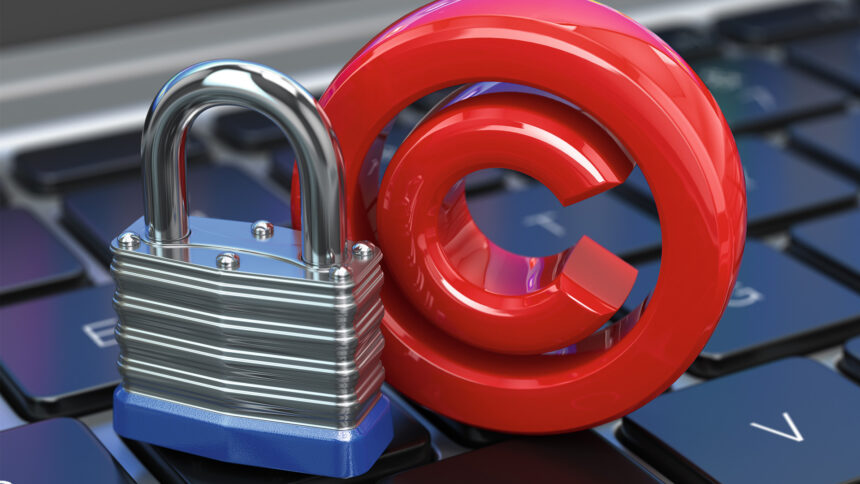Welcome to our blog post on protecting your copyright! In today’s digital landscape, where creative work can be easily shared and reproduced, it’s essential to understand how to safeguard your intellectual property. This blog post aims to provide you with legal solutions to protect your creative work from unauthorized use and infringement. By implementing these strategies, you can ensure that your rights as a copyright holder are respected and that you have the necessary tools to monetize your creations.
I. Understanding Copyright Basics:
A. What is copyright?
Copyright is a legal concept that grants exclusive rights to creators of original works of authorship, such as writings, music, artwork, and more. The purpose of copyright is to encourage creativity by giving creators the ability to control and benefit from their creations. It is important to note that copyright protection is automatically granted upon the creation of a work, without the need for registration or formalities.
B. Rights granted by copyright:
As a copyright holder, you enjoy several exclusive rights, including the right to reproduce, distribute, and create derivative works based on your original creation. These rights provide you with the power to control how your work is used and to monetize it through licensing or other means. Understanding these rights is crucial in protecting your copyright and ensuring that others do not infringe upon them.
II. Common Copyright Infringements:
A. Unauthorized use and reproduction:
One of the most common forms of copyright infringement is the unauthorized use or reproduction of copyrighted work. This can occur when individuals or organizations use your work without obtaining permission or properly crediting you as the creator. Examples of such infringements include unauthorized sharing on social media platforms or copying content without providing attribution.
B. Digital piracy:
Digital piracy has become a significant issue for creators in the digital age. It involves the unauthorized copying, distribution, or downloading of copyrighted material. This includes illegal downloading of music, movies, and software, as well as streaming platforms hosting copyrighted content without proper licensing. Digital piracy not only deprives creators of their rightful income but also undermines the incentive to create new and innovative works.
III. Legal Solutions for Protecting Your Copyright:
A. Copyright registration:
Although copyright protection is automatic, registering your copyright with the relevant authorities, such as the U.S. Copyright Office, offers significant benefits. Registration provides a public record of your copyright, making it easier to enforce your rights in case of infringement. It also allows you to seek statutory damages and attorney’s fees in legal proceedings.
B. Proper usage contracts/licenses:
To protect your copyright when granting others permission to use your work, it is essential to use written contracts or licenses. These legal agreements outline the terms and conditions of usage, including any restrictions, the duration of use, compensation terms, and attribution requirements. By clearly defining these parameters, you can ensure that others respect your copyright and prevent potential disputes.
C. Digital protection techniques:
1. Watermarking and metadata embedding:
Adding watermarks or embedding metadata into your digital work can serve as a deterrent against unauthorized use. Watermarks are visible marks or logos that identify your work, while metadata embedding adds hidden information to the file, such as copyright details or contact information. These techniques make it easier to prove ownership and discourage infringement.
2. Digital rights management (DRM):
Digital rights management (DRM) is a technological solution that protects digital content from unauthorized access and distribution. DRM tools or services encrypt your content, allowing you to control who can access it and under what conditions. These measures can include limiting the number of times a file can be accessed or preventing copying or printing. DRM provides an additional layer of protection for your copyrighted material in the digital realm.
IV. Copyright Enforcement:
A. Monitoring and detection:
To effectively protect your copyright, it is crucial to actively monitor your work online. By regularly searching for unauthorized use or reproduction of your content, you can identify potential infringements and take appropriate action. Automated tools and copyright protection services can simplify this process by scanning the internet for instances of infringement and notifying you of any unauthorized use.
B. Cease and desist letters:
If you discover copyright infringement, sending a cease and desist letter to the infringing party can be an effective first step. A cease and desist letter is a formal notice demanding that the infringer stop using your copyrighted material. It should clearly state the nature of the infringement, provide evidence of your copyright ownership, and request immediate compliance. Crafting a well-drafted letter with the appropriate tone can often resolve infringement issues without the need for legal action.
C. Legal action:
If copyright infringement persists despite other efforts, seeking legal counsel may be necessary. An attorney specializing in copyright law can guide you through the legal process and help you explore remedies such as obtaining an injunction to stop the infringement, seeking damages for financial losses, or negotiating licensing agreements. Legal action should be considered as a last resort, but it can be a powerful tool to protect your copyright and assert your rights.
Conclusion:
Protecting your copyright is crucial in today’s digital world, where unauthorized use and infringement are prevalent. By understanding copyright basics, recognizing common infringements, and implementing legal solutions, you can safeguard your creative work and ensure that you reap the benefits of your efforts. Remember to register your copyright, use proper contracts/licenses, employ digital protection techniques, actively monitor for infringement, and take appropriate enforcement measures when necessary. By taking these proactive steps, you can protect your copyright and contribute to a thriving creative landscape. We encourage you to share your experiences or ask any questions in the comments section below. Together, we can empower creators and safeguard their intellectual property.




